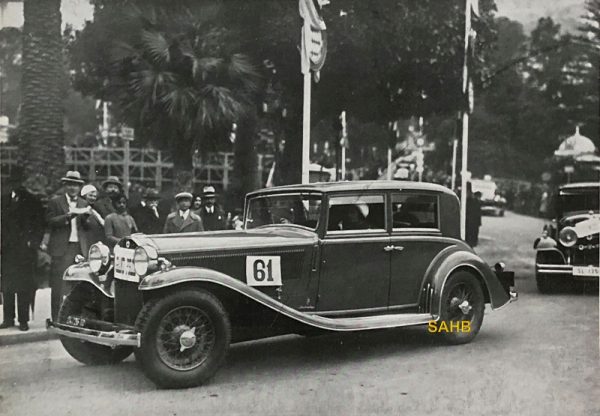
The 24th Monte Carlo Concours d’Élégance on 24 March 1932 produced two category winners – both Lancia Dilambda models and both one-offs bodied by Pinin Farina. One was the so-called Berlina Runabout, a semi-razor edge four-door saloon with a somewhat square aspect, with conventional doors opening on the centre pillar. It did at least have an early version of a proper boot rather than a separate trunk.
The car in our Snapshot, however, named simply as a Berlina, displayed more modern styling. Its front wings swept further back until they met the running boards; the doors now opened the other way to create a pillarless saloon; and the boot, with its inserted spare wheel, was beautifully resolved in a way that would not become fashionable until later in the 1930s.
A month after the report of the Concours Pinin Farina published a colour advertisement featuring three views of the car and celebrating the win of what the coachbuilder named the Grand Prix at the event. The car’s description was instructive: it contained the body designation Berlina a coda, which translates as “saloon with a tail”, and the chassis description corto, indicating the use of the short-chassis version of the Dilambda – no doubt assisting the sporting look of the car.
The Lancia Dilambda was a luxury car built between 1928 and 1935 and officially presented at the Paris Salon in 1929. The Dilambda succeeded the Trikappa and continued the use of a narrow-angle V8 engine. It was, however, smaller in capacity, reduced from 4,594cc to 3,958cc, but produced more power (100 as against 98bhp). The angle between cylinders was also increased, from 14 degrees to 24.
Three versions of the Dilambda were built: the first series was produced between 1928 and 1931 in short and long wheelbases. The second series (1931 to 1933) was also available in two chassis lengths and had modified gearbox and brakes. It is almost certainly this version that appears in our Snapshot.
The third series, produced between 1933 and 1935, had a modified chassis for a more aerodynamic style and was built only with a long wheelbase.
This was a car for the wealthy, and production was limited: fewer than 1,800 were built across the three series, and the second series reached only 300 examples.
The Dilambda’s effective luxury successor (although the models overlapped) was the Astura, built from 1931 to 1939 with a smaller single-overhead-cam V8 rather than the overhead-valve pushrod engine of the Dilambda.







Leave a Comment